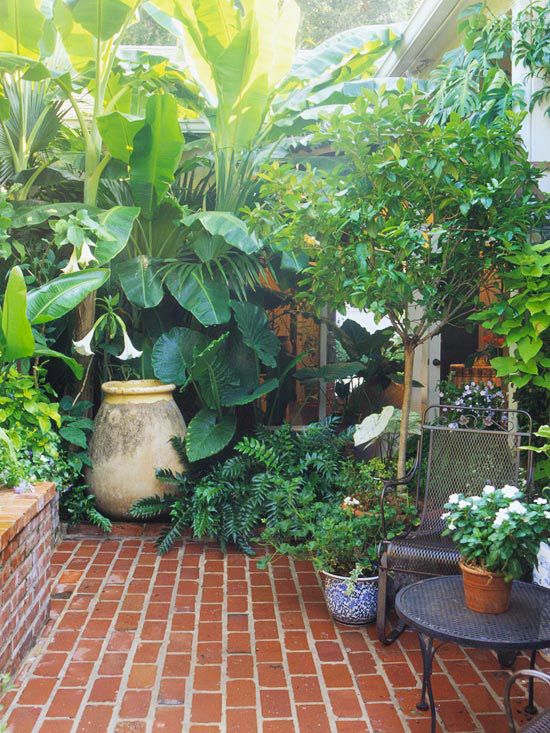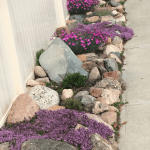Are you looking for creative ways to enhance your outdoor space? Rock gardens can be the perfect solution for adding a touch of natural beauty to your yard. In this article, we’ll explore rock garden ideas that will inspire you to create a stunning and low-maintenance garden that complements your landscape. From selecting the perfect location and designing your rock garden to choosing the right plants and showcasing different rock garden styles, we’ve got you covered.
Rock gardens have become increasingly popular due to their unique appeal and practical benefits. These gardens are not only visually appealing but also offer low maintenance, water conservation, and versatility. Whether you have a small or large outdoor space, a well-designed rock garden can transform any area into a stunning focal point while requiring minimal upkeep. If you’re looking for creative landscaping ideas, rock gardens offer endless possibilities.
When it comes to creating a rock garden, choosing the perfect location is key. Factors such as sun exposure, soil drainage, and overall aesthetics should be considered to ensure the success of your project.
In addition to discussing the benefits of rock gardens and offering tips on designing and maintaining them, we’ll provide insight into different types of rock gardens such as Japanese designs, alpine landscapes, and desert-inspired themes. Get ready to be inspired by our collection of beautiful rock garden ideas.
Benefits of Rock Gardens
Rock gardens are becoming increasingly popular among homeowners and landscaping enthusiasts due to their numerous benefits. One of the primary advantages of rock gardens is their low maintenance requirements. Unlike traditional gardens, rock gardens require minimal upkeep, making them an ideal choice for individuals with busy schedules or those looking to conserve water. In addition, the use of rocks in landscaping helps with water conservation as they provide excellent drainage and prevent erosion.
Another benefit of rock gardens is their versatility. They can be designed to fit a variety of different spaces, from small urban yards to large rural properties. The use of different types and sizes of rocks allows for endless design possibilities, making it easy to create a custom look that complements the surrounding landscape.
When choosing the perfect location for your rock garden, it’s essential to consider factors such as sun exposure, soil drainage, and aesthetics. Most rock garden ideas involve placing the garden in a sunny spot, as many alpine plants and succulents thrive in full sun. Additionally, well-draining soil is crucial for the success of a rock garden, so it’s important to choose a location with good natural drainage.
Incorporating these ideas into your own rock garden project can help you create a stunning and low-maintenance space that adds beauty and visual interest to your outdoor environment. Whether you opt for a Japanese-inspired design, an alpine rock garden, or a desert-inspired layout, there are countless possibilities for creating your own unique rock garden oasis.
Choosing the Perfect Location for Your Rock Garden
When planning to create a rock garden, one of the most important factors to consider is the location. The success and visual appeal of your rock garden depend on the amount of sun exposure, soil drainage, and overall aesthetics of the chosen location. Here are some key points to keep in mind when selecting the perfect spot for your rock garden:
- Sun Exposure: Rock gardens typically thrive in areas with ample sunlight. When choosing a location for your rock garden, consider areas that receive at least 6 hours of direct sunlight per day. This will ensure that your plants thrive and the rocks are properly showcased.
- Soil Drainage: Proper drainage is essential for the health of any garden, and this holds true for rock gardens as well. Look for an area with well-draining soil to prevent waterlogged roots and potential issues with erosion.
- Aesthetics: Consider how the location of your rock garden will complement the overall landscape design. Whether you want it to be a focal point or blend seamlessly with the surroundings, choose a spot that enhances the aesthetic appeal of your outdoor space.
Taking these factors into account will help you identify the ideal location for your rock garden. Once you have found a suitable spot that meets these criteria, you can begin planning and designing your unique rock garden to enjoy for years to come.
In addition to these considerations, it’s also important to assess any potential obstacles such as tree roots or underground utilities that may affect your chosen location. By carefully evaluating these elements beforehand, you can ensure that your rock garden thrives in its designated spot. With a strategic approach to selecting the perfect location, you can create a stunning and sustainable rock garden that complements your outdoor space while conserving water and minimizing maintenance requirements.
Designing Your Rock Garden
One of the key elements in creating a visually stunning and naturalistic rock garden is the incorporation of different types of rocks. When choosing rocks for your garden, consider using a variety of sizes, shapes, textures, and colors to create visual interest. Larger boulders can serve as focal points, while smaller rocks can be used to define pathways or borders within the garden. By carefully selecting and arranging rocks, you can mimic the look of a natural rocky landscape.
In addition to selecting different types of rocks, creating visual interest in your rock garden also involves strategic placement and arranging them in a way that looks organic. Consider grouping similar rocks together and varying their heights and angles to create a more dynamic landscape. Layering rocks can also add depth and dimension to your garden, making it more visually appealing.
When designing a rock garden, it’s essential to strive for a naturalistic look. This means avoiding overly symmetrical arrangements and instead opting for a more organic layout that mimics how rocks might naturally occur in nature. Look for inspiration in natural landscapes such as mountain ranges or rocky cliffs, and try to recreate those natural patterns in your own rock garden design.
| Rock Garden Design Elements | Details |
|---|---|
| Rocks | Variety of sizes, shapes, textures, and colors |
| Visual Interest | Strategic placement, grouping similar rocks together |
| Naturalistic Design | Avoid overly symmetrical arrangements |
Selecting Plants for Your Rock Garden
When it comes to selecting plants for your rock garden, there are several factors to consider. One of the most important considerations is the ability of the plants to thrive in dry and rocky conditions. Drought-tolerant succulents are an excellent choice for rock gardens as they require minimal watering and can withstand harsh conditions. These unique and visually striking plants come in a variety of shapes and sizes, adding texture and interest to your rock garden.
In addition to succulents, flowering perennials are another great option for adding color and vibrancy to your rock garden. These hardy plants bloom year after year, providing a burst of color amidst the rocks and creating a visually appealing contrast. When choosing flowering perennials for your rock garden, consider selecting varieties that are native to your region to ensure they will thrive in the existing soil and climate conditions.
For those looking to add a touch of alpine charm to their rock garden, unique alpine plants are an ideal choice. These high-altitude plants are well-suited for rocky terrain and can create a picturesque, mountainous feel in your garden. From delicate saxifrages to stunning gentians, there is a wide range of alpine plants to choose from that will thrive in the unique environment of a rock garden.
Overall, selecting the right plants for your rock garden is essential in creating a thriving and visually appealing landscape. By incorporating drought-tolerant succulents, flowering perennials, and unique alpine plants into your design, you can create a stunning rock garden that requires minimal maintenance while offering maximum beauty and charm.
Incorporating Drought-Tolerant Succulents
When incorporating drought-tolerant succulents into your rock garden design, consider arranging them in clusters or drifts amongst the rocks to mimic their natural growth patterns in arid environments. This will create a cohesive and organic look while also highlighting the unique shapes and textures of the succulents.
Choosing Flowering Perennials
When selecting flowering perennials for your rock garden, opt for varieties that have long blooming periods or staggered blooming times to ensure continuous color throughout the growing season. Additionally, consider planting these perennials in pockets or crevices within the rocks to create a naturalistic appearance while also providing them with adequate drainage.
Showcasing Unique Alpine Plants
To showcase unique alpine plants in your rock garden, create elevation changes by building small mounds or terraced sections where these plants can thrive. This will not only provide visual interest but also simulate the diverse microclimates found in high-altitude environments where alpine plants typically grow.
Maintenance Tips for Rock Gardens
Rock gardens are not only a beautiful addition to any landscape, but they also offer a range of benefits. From low maintenance to water conservation and versatility, rock gardens are becoming increasingly popular among homeowners and garden enthusiasts. When considering rock garden ideas, it’s important to keep in mind the maintenance involved in keeping them looking their best.
Weeding is an essential part of maintaining a rock garden. The minimal soil present in rock gardens means that weeds can quickly take over, competing with the desirable plants for nutrients and water. Regularly inspecting your rock garden and removing any weeds by hand or using a tool like a hoe will help keep the space tidy and ensure that your chosen plants can thrive.
Proper watering is crucial for the health of your rock garden plants, especially during the hot summer months. Many rock garden plants are drought-tolerant, but they still require some water, particularly when first establishing themselves in the garden. It’s important to water deeply but infrequently to encourage deep root growth and resilience during dry periods.
Seasonal care is also an important aspect of maintaining a rock garden. This includes pruning any overgrown plants, replacing any that may have perished during extreme weather conditions, and ensuring that the rocks and pathways are clear of debris.
Planning for seasonal changes by selecting a variety of plants that provide interest throughout the year will help keep your rock garden looking its best no matter the season. Implementing these maintenance tips will ensure that your rock garden remains a stunning focal point in your landscape for years to come.
Showcasing Different Rock Garden Ideas
Rock gardens are a popular landscaping choice for many homeowners looking to add a unique and natural element to their outdoor space. One of the appeals of rock gardens is the endless possibilities they offer in terms of design and theme. From Japanese rock gardens to alpine rock gardens to desert-inspired designs, there are countless options to explore when it comes to creating your own rock garden masterpiece.
Japanese Rock Gardens
Also known as “zen gardens,” Japanese rock gardens are characterized by their minimalist and tranquil design. These gardens often feature carefully raked gravel or sand, with larger rocks strategically placed to represent mountains or islands. The idea behind these rock gardens is to create a sense of peacefulness and simplicity, making them an ideal addition for those seeking a serene and meditative outdoor space.
Alpine Rock Gardens
Alpine rock gardens mimic the natural landscapes found in mountainous regions, featuring a variety of plants that thrive in rocky and high-altitude environments. These types of rock gardens typically include small, low-growing perennials, grasses, and shrubs, along with different types of rocks such as limestone and granite. The key to designing an alpine rock garden is to create a rugged and naturalistic look that mirrors the beauty of alpine meadows and cliffs.
Desert-Inspired Designs
For homeowners living in arid climates or looking for a water-wise landscaping solution, desert-inspired rock gardens are an excellent choice. These designs often incorporate native succulents, cacti, agave, and other drought-tolerant plants that thrive in sandy soil conditions. Rocks such as sandstone or lava rock are commonly used in these designs to create a desert-like atmosphere that requires minimal water and maintenance.
Whether you are drawn to the simplicity of Japanese rock gardens, the rugged beauty of alpine rock gardens, or the low-maintenance appeal of desert-inspired designs, there is no shortage of inspiration when it comes to creating your own unique rock garden masterpiece.
Inspiring DIY Rock Garden Projects
In conclusion, rock gardens offer a unique and beautiful way to enhance the landscape of any outdoor space. The appeal of rock gardens lies in their low maintenance requirements, water conservation benefits, and versatility in design. By carefully choosing the location, incorporating different types of rocks, selecting appropriate plants, and implementing proper maintenance techniques, anyone can create a stunning rock garden that adds visual interest to their yard.
When it comes to DIY rock garden projects, the possibilities are endless. Whether creating miniature rock gardens, terrariums, or vertical rock gardens, individuals have the opportunity to express their creativity and showcase their personal style. These projects not only add beauty to the outdoor space but also provide a sense of tranquility and relaxation as one admires the naturalistic designs.
For those seeking inspiration for their own rock garden ideas, there are numerous options to consider such as Japanese rock gardens, alpine rock gardens, and desert-inspired designs. Each style offers its own unique characteristics and can be tailored to fit specific preferences and aesthetics. Overall, the appeal of rock gardens continues to grow as more people seek ways to create sustainable and visually appealing landscapes in their own backyards.
Frequently Asked Questions
How Do You Make a Simple Rock Garden?
Making a simple rock garden involves selecting a suitable location, removing any grass or weeds, and then arranging rocks and boulders in a visually appealing way. Adding soil, plants, and mulch completes the look.
How Do You Arrange Rocks in a Garden?
When arranging rocks in a garden, it’s important to consider their size, shape, and color to create an aesthetically pleasing display. Positioning them in clusters or lines can help create a natural and balanced look.
Are Rock Gardens a Good Idea?
Rock gardens can be a good idea for several reasons. They require minimal maintenance, can thrive in areas with poor soil quality, and offer unique texture and visual interest to your outdoor space. Additionally, they can be designed to complement the natural landscape and conserve water.

Welcome to my gardening blog! I am passionate about plants and enjoy sharing my knowledge and experiences with others. In this blog, I will write about everything related to gardening, from tips on how to get started to updates on my own garden projects.





